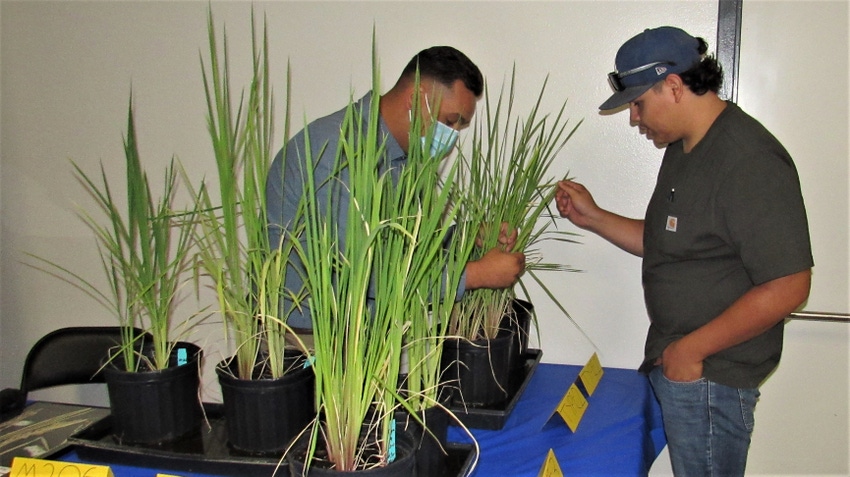
The use of certified seed, equipment sanitation and crop rotation are among the tools California growers are using to curb instances of weedy rice, university crop advisors say.
Most growers are scouting at least monthly for weedy rice and finding that other weed species are more prevalent even for those who have it, according to a University of California survey.
The efforts are a reason that weedy, or red, rice isn’t considered a key weed in California even though it is a major problem in other rice-growing regions in the Americas, in Southern Europe and the Mediterranean and in West Africa, experts say.
While weedy rice infestations were rare in California after the 1950s mainly because of seeding in water, the most common form of weedy rice started appearing in 2003 and other types began showing up in 2016, said Luis Espino, a UC Cooperative Extension rice farming systems advisor.
According to the UC’s survey, 2,237 of California’s roughly 500,000 acres of planted rice were infested last year, with most infested basins having fewer than five patches of the weed, Espino said during a recent workshop in Yuba City, Calif. The university plans to repeat the survey in 2023.
“It’s important to know what we have,” Espino said. “The higher the infestations, the more likely that there are going to be crosses.”
Weedy rice can significantly hamper yields when infestations are high. In the U.S. South, losses have been as high as 60% when uncontrolled, explained Whitney Brim-DeForest, a UCCE rice and wild rice advisor.
The unique thing about weedy rice is that it is the same species as domesticated rice (both are Oryza sativa L.), which means that growers can only control it through non-chemical means since any herbicides applied to it will also kill the crop. she said.
Crop impacts
As Brim-DeForest explained, there are several ways that weedy rice can affect production:
1) Reducing milling quality. Due to the extra milling required to remove the red-colored bran, the number of cracked and broken kernels will increase, therefore decreasing the value and the price paid to the rice grower. If the rice is to be milled and sold as brown rice, large amounts of red bran can reduce the milling yield significantly.
2) Hybridization with domesticated varieties. Weedy rice can cross with domesticated varieties in the field. If there is a high number of weedy plants in a field, the odds that this will occur is even greater. The hybrids (between weedy rice and domesticated varieties) may have different characteristic than their parents (more vigorous growth, for example).
3) Yield decreases. Since weedy rice shatters (falls off of the panicle before harvest), once the population reaches a critical threshold in the field, yields can decrease significantly.
4) Weed management cost. Weedy rice cannot be managed by chemical means. Therefore, any control efforts have to be through cultural practices. One of the most effective methods is to hand-pull it out of the field. Labor, as we all know, is very expensive.
In California, growers can growers can use cultural practices such as a stale seedbed before the rice season. In UC field trials, weedy rice began to emerge in stale seedbeds after about 8 days versus as long as 24 days in fields that were flooded. However, keeping the beds dry can delay planting by as much as a month, Brim-DeForest noted.
Another option that UC advisors have suggested for growers is to take advantage of the drought and low water allocations to fallow those fields with known populations of the plant.
Measures working
Measures that growers and pest control advisors have taken so far appear to be working. In 2016, weedy rice was identified on over 10,000 acres in Butte, Glenn, Colusa, Sutter, Yuba, Placer and Yolo counties, or about 2% of the state’s total acreage, according to the UC.
California growers are encouraged to stay on top of best management practices that includes use of certified seed – a law in the state. In the case of specialty varieties that cannot be verified and merchandised as certified seed, growers should use seed that has been approved through the Rice Seed Quality Assurance Program.
About the Author(s)
You May Also Like






